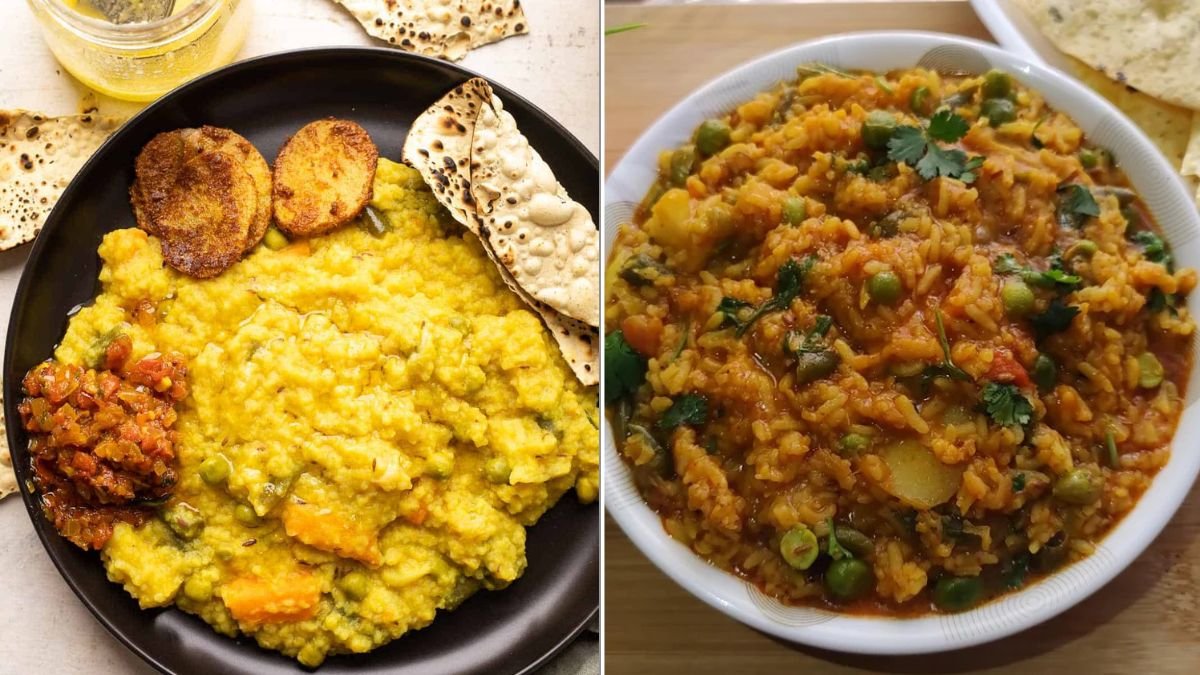There’s something undeniably soothing about a steaming bowl of vegetable khichdi — soft rice and lentils simmered together with fragrant spices and seasonal vegetables. It’s a dish that represents warmth, nourishment, and home. Whether you’re recovering from a long day, craving comfort food, or just want something wholesome and easy to digest, khichdi always comes to the rescue.
This humble dish has been part of Indian kitchens for centuries, celebrated for its simplicity and balance. In this 7-step guide, we’ll show you how to make vegetable khichdi comfort-style, combining nutrition with heartwarming flavors that make it perfect for any occasion.
What Is Vegetable Khichdi?
At its core, khichdi is a one-pot meal made with rice, lentils (usually moong dal), vegetables, and mild spices. Every region in India has its own version — from the ghee-rich Gujarati khichdi to the spicy Bengali bhoger khichuri. The beauty of this dish lies in its flexibility: you can make it light and simple or rich and flavorful depending on your mood.
A well-cooked khichdi is soft, aromatic, and slightly soupy, pairing beautifully with ghee, papad, or pickle. And when you add fresh vegetables like carrots, peas, and beans, it turns into a wholesome comfort meal bursting with color and nutrients.
Step 1: Gather the Ingredients
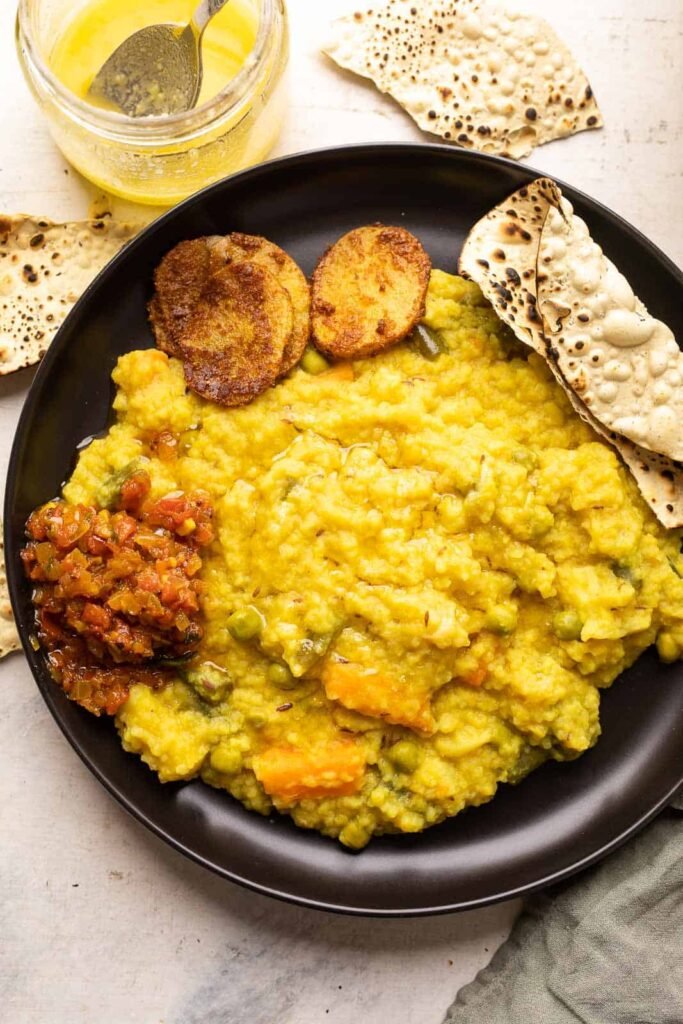
To create the perfect comfort-style vegetable khichdi, start with these essentials:
Main Ingredients
- 1 cup rice – Short-grain varieties like sona masoori or ponni work best.
- ½ cup moong dal (split yellow lentils) – You can also mix with masoor dal for added texture.
- 2 tablespoons ghee or oil – Ghee gives a rich, comforting flavor.
- 4 cups water (or adjust for desired consistency).
Vegetables (use seasonal favorites)
- ½ cup chopped carrots
- ½ cup green peas
- ½ cup diced potatoes
- ¼ cup chopped beans
- 1 small tomato (optional, for tang)
- 1 small onion (finely chopped, optional)
Spices and Seasoning
- ½ teaspoon cumin seeds
- 1 teaspoon grated ginger
- 1 green chili (optional, slit lengthwise)
- ¼ teaspoon turmeric powder
- ½ teaspoon coriander powder
- Salt to taste
- Fresh coriander leaves for garnish
For extra aroma, you can add a pinch of asafoetida (hing) or a few curry leaves.
Step 2: Wash and Soak the Dal and Rice
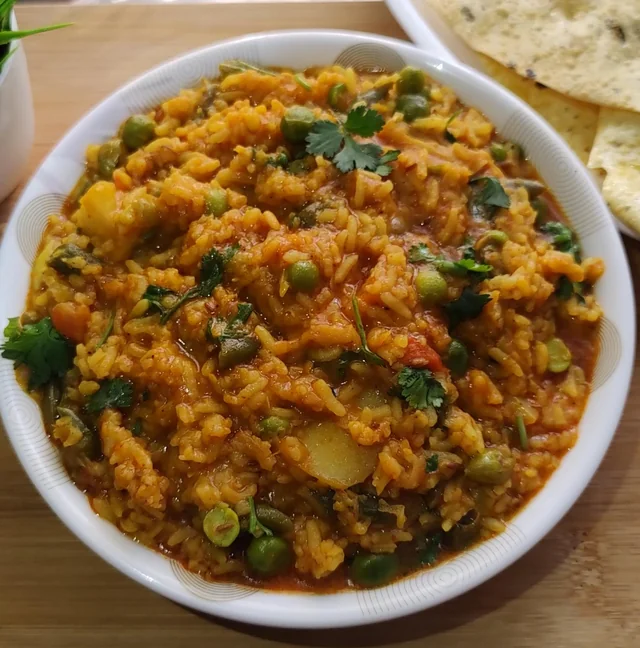
Before cooking, wash the rice and dal together under running water until the water runs clear. This removes extra starch and makes the khichdi light and fluffy instead of sticky.
After rinsing, soak them for 15–20 minutes. Soaking helps the grains cook faster and ensures that the lentils become soft and creamy when cooked.
While the rice and dal are soaking, you can chop your vegetables and get the rest of the ingredients ready.
Step 3: Sauté the Base for Flavor
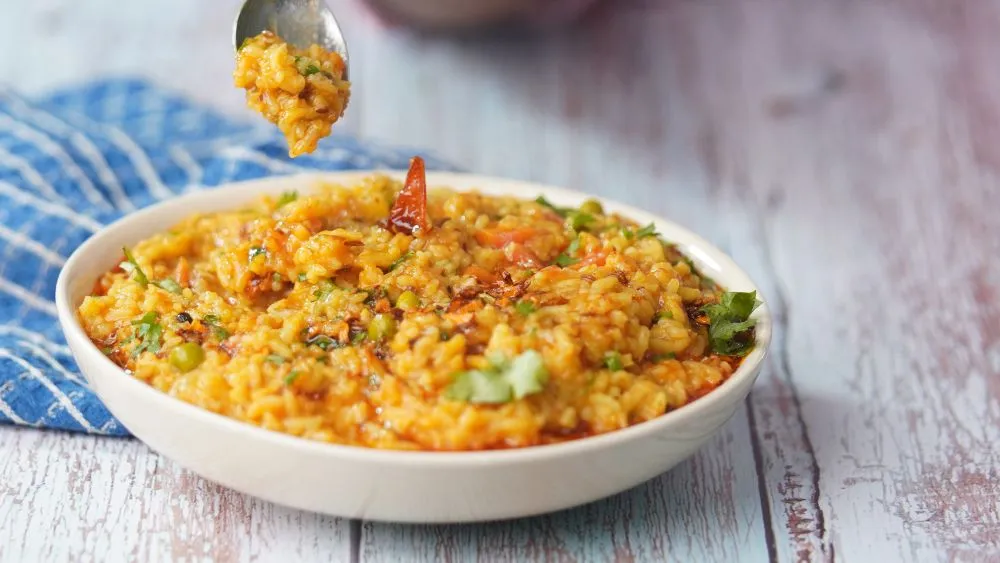
In a pressure cooker or deep pot, heat ghee over medium flame. When it’s warm, add:
- Cumin seeds, and let them crackle.
- Next, toss in grated ginger, green chili, and asafoetida (if using).
- If you’re adding onions, sauté them until golden brown for a deeper flavor.
Now, add the chopped vegetables and stir-fry them for a few minutes. This light sauté helps release the natural sweetness of the veggies and prevents them from turning mushy later.
Finally, add turmeric powder and coriander powder — these two spices form the backbone of khichdi’s gentle yet distinctive flavor.
Step 4: Combine Rice, Dal, and Water
Now that your vegetables are slightly cooked and fragrant, it’s time to add the soaked rice and dal. Stir everything together so the grains are well coated with ghee and spices. This step enhances the nutty aroma of both rice and lentils.
Next, pour in 4 cups of water. For a thicker khichdi, you can reduce it slightly; for a softer, porridge-like version, add more water.
Add salt to taste, stir once more, and close the lid.
If you’re using a pressure cooker, cook for 3–4 whistles on medium heat. In an Instant Pot, cook for about 10 minutes on high pressure.
Step 5: Let It Rest and Fluff
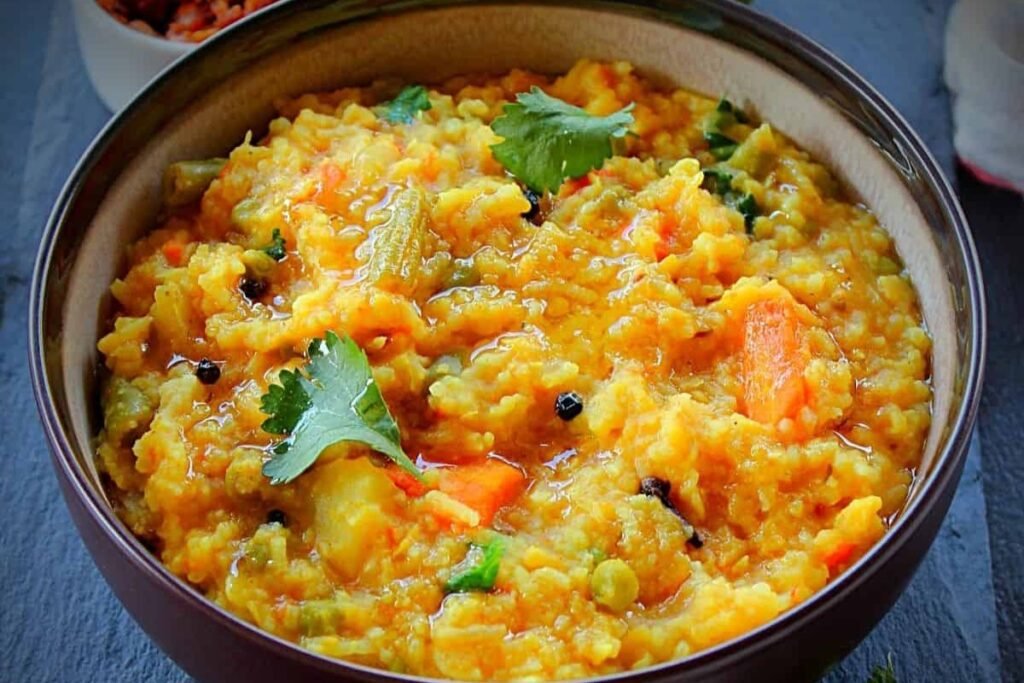
Once cooked, allow the pressure to release naturally. This helps the khichdi settle and prevents overcooking.
Open the lid and gently stir — you should see soft, creamy grains of rice and dal beautifully blended with vegetables.
If it feels too thick, add a little warm water or milk and mix to get your preferred consistency. Remember, comfort-style khichdi should be slightly loose and creamy, not dry or clumpy.
Step 6: Add the Comfort Touch – Ghee and Garnish
Right before serving, stir in a generous spoonful of ghee. This not only enhances flavor but also gives the khichdi that rich, smooth texture that melts in your mouth.
Top with:
- Fresh coriander leaves for a burst of freshness
- A dash of black pepper or red chili flakes if you like some heat
- Optional: A squeeze of lemon juice for brightness
This finishing touch elevates a simple dish into a soul-satisfying meal.
Step 7: Serve It Comfort Style
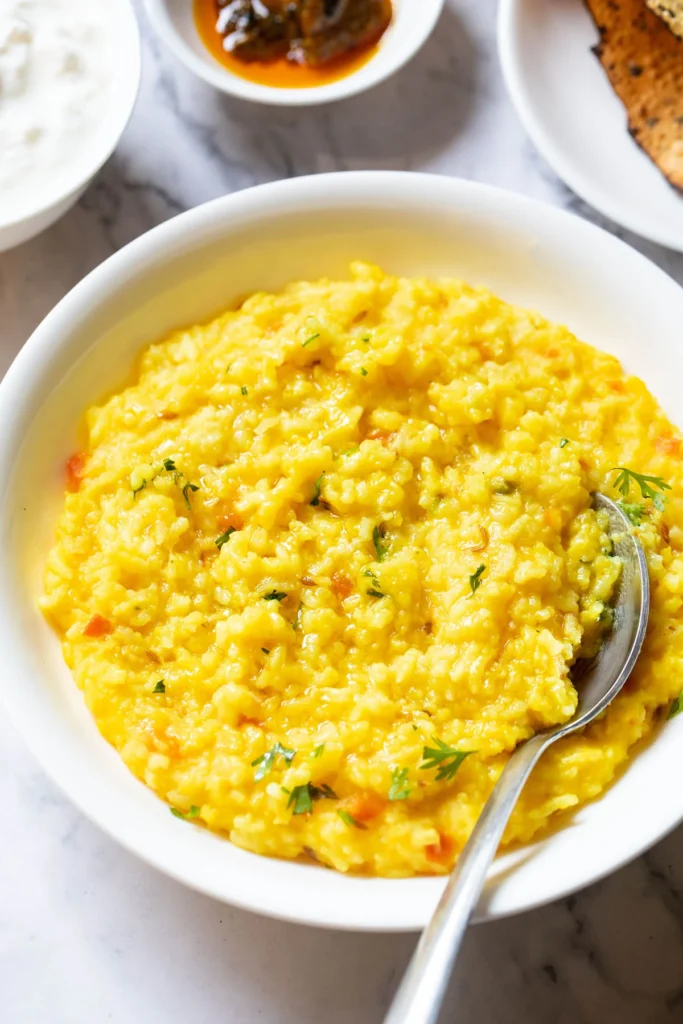
Vegetable khichdi is best served hot, right out of the pot. Here are some serving ideas to make it a complete, comforting experience:
Classic Combination:
Serve with a dollop of ghee, papad, and mango pickle — a timeless combo that balances the soft and spicy notes perfectly.
South Indian Twist:
Enjoy your khichdi with coconut chutney, curd, or a spoonful of rasam for a tangy touch.
Nourishing Bowl:
Top it with toasted nuts, fried onions, or paneer cubes for added richness and texture.
Pair with a glass of chilled buttermilk or fresh lime water for a refreshing contrast.
Tips for Perfect Khichdi Every Time
- Balance water and grain: Too little water makes it dry; too much makes it soupy. Adjust to your liking.
- Choose fresh veggies: Seasonal produce enhances taste and nutrition.
- Don’t skip ghee: It’s the soul of traditional khichdi — skip only if you must.
- Add spices mindfully: The flavor should be mild and aromatic, not overwhelming.
- Experiment with dals: Try a mix of moong and masoor dal for a deeper flavor.
- Make it heartier: Add a handful of spinach, methi leaves, or even millets for variation.
Why Vegetable Khichdi Is a Comfort Classic
Khichdi isn’t just food; it’s therapy in a bowl. The combination of rice, dal, and vegetables provides the perfect balance of carbohydrates, proteins, fiber, and vitamins. It’s light on the stomach yet nourishing — ideal for all ages.
Beyond its nutritional value, khichdi symbolizes the warmth of home. Whether you’re celebrating, recovering, or simply resting, it wraps you in comfort and care.
Final Thoughts
Cooking vegetable khichdi comfort-style is about more than just following a recipe — it’s about embracing simplicity, warmth, and love in every spoonful. With these 7 easy steps, you can make a bowl that’s not only healthy and delicious but also carries the essence of home-cooked goodness.
So next time you crave something hearty yet soothing, skip the takeout and make a pot of vegetable khichdi. Serve it warm, top it with ghee, and savor the joy of comfort food at its finest.
